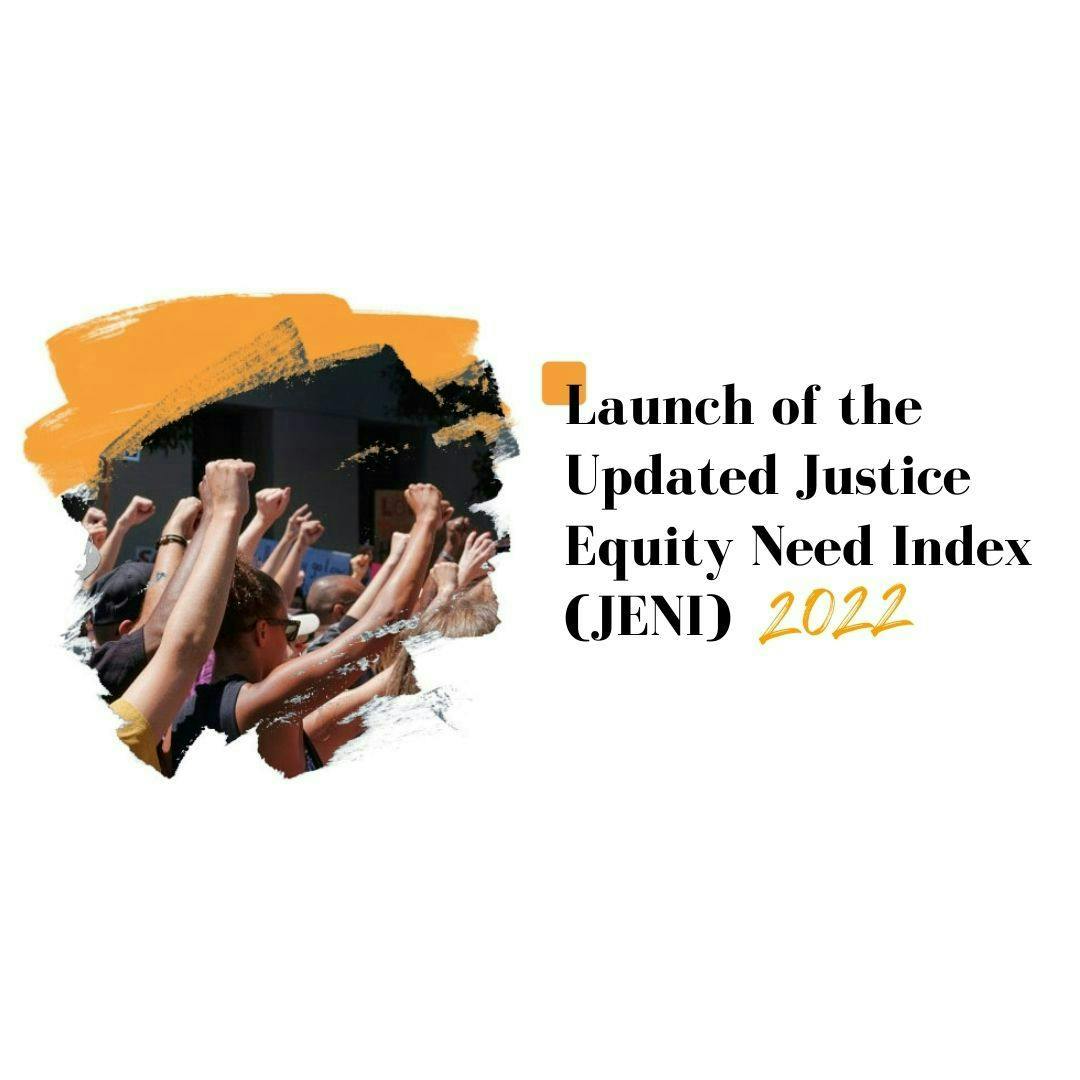Introducing the Updated Justice Equity Need Index (JENI)

By: Myanna A. Khalfani-King
On April 6, 2022, Catalyst California hosted a webinar detailing the Updated Justice Equity Need Index (JENI) 2022. The presentation covered the updated JENI methodology, how to use the updated tool in concert with the Justice Equity Service Index (JESI) and shared a high-level analysis of our findings to guide policymaking and advocacy.
Webinar highlights include:
- An overview of JENI’s development and purpose
- Discussion of the updated JENI methodology and indicators
- A detailed demonstration of how to use the JENI to gather information to aid policymakers, funders, and advocates
- Key JENI findings that paint a picture of Los Angeles County’s highest need communities
In addition, attendees were able to see how our justice equity tools –the JENI and JESI—can be used together to gather information to aid advocacy strategies and equitable funding allocation.
Here is a summary of the important information covered in the webinar:
Justice Equity Tools: Development and Purpose
Before the JENI’s development in 2019, Los Angeles County lacked a data-driven tool to identify and assess where communities most impacted by our criminal justice system lived. The JENI was created, in partnership with community-based organizations, to fill this gap. The JENI, is an interactive geographic mapping tool that identifies communities impacted by the criminal justice system to inform programmatic strategies and budget allocations to build equitable service delivery coverage across Los Angeles County.
Justice Equity Tools:
Justice equity is the fair sharing of resources and opportunities with those most impacted by systemic injustice in our criminal justice system. The JENI measures ten indicators by zip code resulting in a relative ranking—the higher the ranking and darker the color, the higher the need in that area. The JESI has four justice-related community-based provider categories—Health and Wellness, Housing and Employment, Prevention and Intervention, and Community Services and Advocacy—that rank zip codes from lowest to highest relative service levels.
JENI Overview:
There are several different components within the JENI 2022 update, including system involvement, inequity drivers, and criminalization risk. Along with increasing user-friendliness by upgrading the map from static to interactive, other additions include a race composite score to uplift smaller populations of American Indian and Alaska Native (AIAN) and Native Hawaiian and other Pacific Islander (NHPI), new data, and a methodology update.
Below is some guidance for interpreting the data when using our equity tools. We recommend layering all three approaches when using the data to make decisions for policy and advocacy.
- JENI Needs levels – What are the need levels, areas of high need, and where are the hot spots (clusters of zip codes) with higher needs.
- JESI Service levels – How do service levels compare to need levels and where are cold spots (clusters of zip codes) or areas with low service levels.
- Community input and insights – Does the data track with community experience, and what services are missing.
Policymakers and advocates can use justice equity tools to:
- Navigate through hot spots to understand areas of greatest need based on the indicators.
- Use the components map to do a deeper dive into what services exist and to engage communities in better understanding the service landscape.
- Download and use the data table in excel to create additional data points of targeted areas to aid in advocacy, funding, and policy decisions.
Highlight of JENI 2022 Findings:
The webinar provided insights on what areas within Los Angeles County are impacted by our criminal justice system based on the indicators and components of our justice equity tools.
- South Los Angeles has a higher concentration of zip codes that rank highest/high need on the JENI.
- Almost half (48.7 percent) of Los Angeles County residents live in a zip code with the highest / high JENI need levels.
- Communities with higher justice equity needs often do not have higher service levels.
- For our regional analysis, the data shows Supervisorial District 2 has over 50 percent of its residents living in a zip code with the highest need. Similarly, Service Planning Area 6 has 100 percent of its residents living in a zip code experiencing the highest/high inequity drivers need.
The justice tools provide us with a roadmap of where resources and coordination are needed—noting that the tools should not be used alone but coupled with community engagement. Engaging with community-based organizations and system-impacted residents is critical to ensuring the resources and support meet the need for justice equity.
